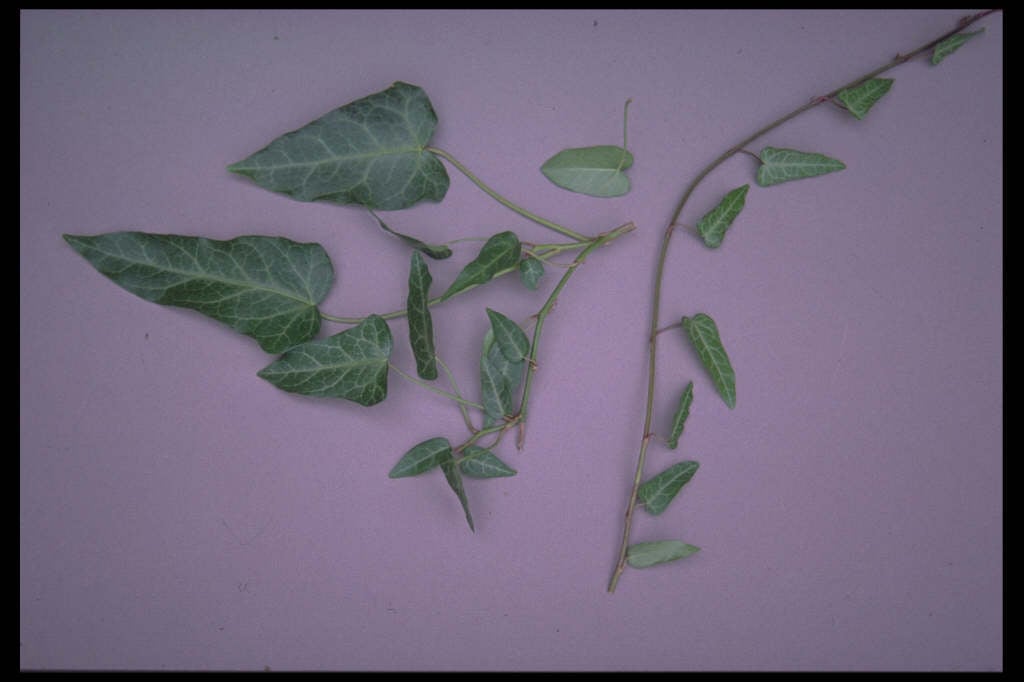Hedera pastuchovii 'Ann Ala'

ivy 'Ann Ala'
An evergreen climber to 2.4m tall, with large sword-shaped, very dark green, undivided leaves 5-9cm long, heart-shaped at the base, with pale green veins and a red midrib beneath. Between late summer and late winter, small, greenish flowers, produced in umbels, are followed by globular black fruits, ripening in spring or early summer, on mature foliage

Buy this plant
Size
Ultimate height
2.5–4 metresTime to ultimate height
5–10 yearsUltimate spread
0.5–1 metresGrowing conditions
Moisture
Moist but well–drained, Well–drainedpH
Acid, Alkaline, NeutralColour & scent
| Stem | Flower | Foliage | Fruit | |
| Spring | Green | |||
|---|---|---|---|---|
| Summer | Green | |||
| Autumn | Green | |||
| Winter | Green Yellow | Green | Black |
Position
- Full shade
- Full sun
- Partial shade
Aspect
South–facing or West–facing or North–facing or East–facing
Exposure
Exposed or Sheltered Hardiness
H5Botanical details
- Family
- Araliaceae
- Native to GB / Ireland
- No
- Foliage
- Evergreen
- Habit
- Climbing
- Potentially harmful
- Harmful if eaten: skin irritant/allergen. Wear gloves and other protective equipment when handling. Pets (dogs, cats, rabbits, rodents): Harmful if eaten, skin irritant/allergen. For further information and contact numbers regarding pets, see the HTA guide to potentially harmful plants
- Genus
Hedera are evergreen climbing shrubs clinging by aerial roots. Clusters of small yellow-green flowers are followed by usually black berries. Foliage of flowering shoots is often less deeply lobed than that of the sterile, climbing shoots
- Name status
Accepted
How to grow
Cultivation
A climber that will thrive in any fertile soil, in sun or shade
Propagation
In summer, root semi-ripe cuttings of juvenile growth to obtain plants with a trailing habit
Suggested planting locations and garden types
- City and courtyard gardens
- Cottage and informal garden
- Coastal
- Wildlife gardens
- Flower borders and beds
- Wall side borders
- Climber and wall shrubs
Pruning
Pruning group 11 at any time
Pests
May be susceptible to glasshouse red spider mite, scale insects, vine weevil and aphids
Diseases
May be susceptible to honey fungus (rarely) and a leaf spot
Get involved
The Royal Horticultural Society is the UK’s leading gardening charity. We aim to enrich everyone’s life through plants, and make the UK a greener and more beautiful place.